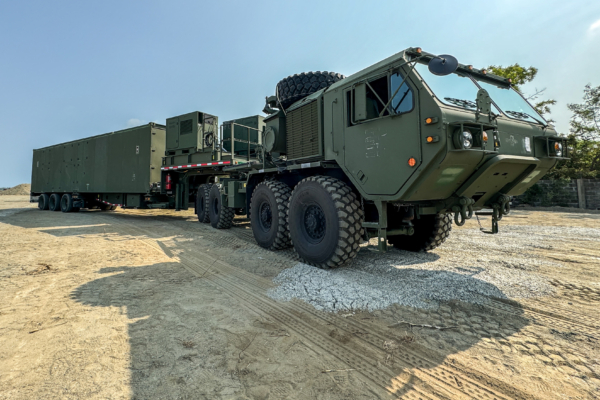Despite Beijing’s request, the United States will not immediately withdraw the deployment of the “Typhon” medium-range missile system in the Philippines. The U.S. is testing the feasibility of using the system in regional conflicts.
The “Typhon Weapons System” developed by Lockheed Martin utilizes the Navy’s Mark 41 vertical launch system, adapted for land-based operations to enhance firepower across multiple domains.
The “Typhon” can launch the “Standard 6” (SM-6) anti-aircraft missile and Tomahawk cruise missiles, which are core capabilities of the U.S. Army’s new Multi-Domain Task Force (MDTF).
The new “Standard 6” missile has a range of over 240 kilometers, and the upgraded Tomahawk cruise missile can strike targets up to 2,500 kilometers away.
The Philippines, located south of Taiwan, plays a crucial role in U.S. Asian strategy and would serve as an indispensable transit point for U.S. assistance to Taiwan in the event of a Chinese attack. In April this year, the U.S. Pacific Army Command announced the deployment of the “Typhon” system in northern Luzon, Philippines, as part of joint U.S.-Philippine training.
Luzon Island is approximately 250 miles from Taiwan. Deploying the “Typhon” system on the island not only covers the entire Taiwan Strait and Luzon Strait but also extends the firepower radius to important Chinese coastal cities like Shanghai, Guangzhou, and various People’s Liberation Army bases in the South China Sea.
This marks the first deployment of the system in the Indo-Pacific region.
On Wednesday, Philippine officials stated that while joint training would conclude this month, they have not been notified to return the Typhon system.
Philippine Army spokesman Colonel Louie Dema-ala told Reuters that training is ongoing, and the duration of the missile system’s stay will be determined by the United States Army Pacific (USARPAC).
A U.S. Army Pacific public affairs officer mentioned that the Philippine military had indicated that the “Typhon” might remain beyond September. Soldiers received training last week, focusing on integrating host country support in discussions about using the system.
A senior Philippine government official and another source revealed that the U.S. and the Philippines are testing the feasibility and operational effectiveness of using the system in conflict scenarios.
Officials emphasized that the modular nature of the “Typhon” system allows for quick mobility as needed. The deployment in the Philippines aims to assess the system’s feasibility for easy future deployments when required.
There are currently no plans to withdraw the system. If a withdrawal is considered, it would be because the objectives have been achieved. After completion of all maintenance or preparation work, redeployment may be possible, maintaining the strategic value of the system for deterring China.
“We want them (China) to lose sleep over this,” the official added.
In recent times, the U.S. has been gathering a variety of anti-ship weapons in the Indo-Pacific region to prepare for potential U.S.-China conflicts.
The U.S. is accelerating testing of its “QUICKSINK” weapon, a low-cost bomb equipped with affordable GPS guidance components and a guiding head that can track moving objects.
Last month, the U.S. Air Force used a B-2 stealth bomber in the Gulf of Mexico to test this anti-ship guided bomb on a target ship.
While China still maintains a significant advantage in the number of anti-ship missiles, U.S. ramping up production of QUICKSINK will narrow this gap, increasing risk for China’s approximately 370 warships in any future conflict.
Earlier this year, Admiral Samuel Paparo, Commander of the U.S. Indo-Pacific Command, disclosed a “nightmare” plan involving deploying thousands of unmanned submarines, surface vessels, and aerial drones to deter Chinese military action against Taiwan.

